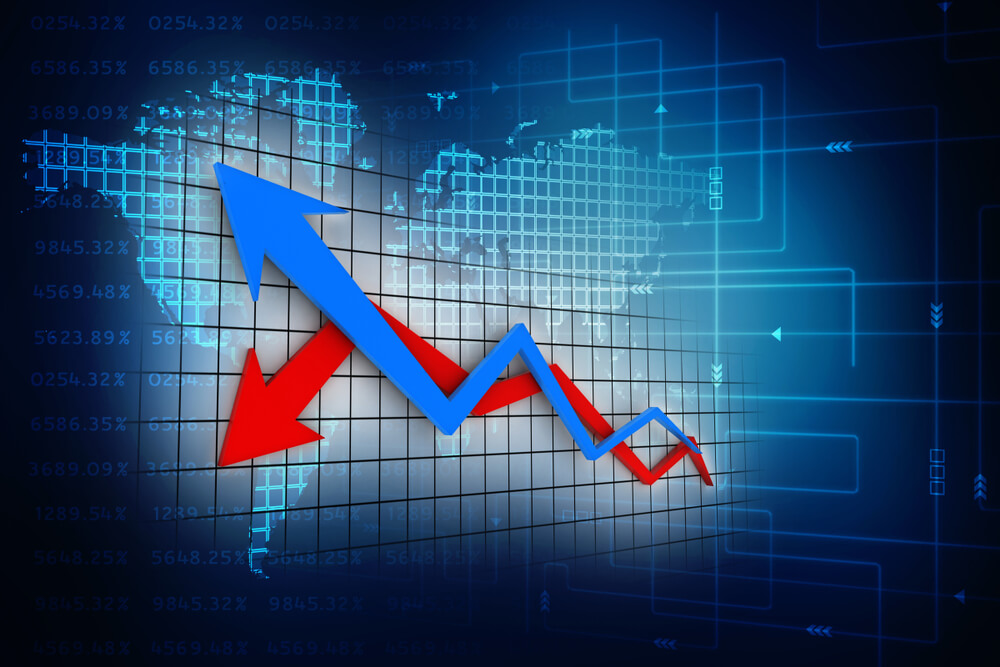You might have noticed the price of gold spiking to new all-time highs lately.
We’ve covered it quite a bit on Money & Markets, and the general consensus around here is that the barbarous relic is likely to go a lot higher.
Investors view gold as an inflation hedge. So, a bull market in the yellow metal would suggest that inflation was starting to bubble to the surface.
But inflation is dead on arrival at the moment and will stay that way for a while.
Yes, the Federal Reserve is printing money at an unbelievable rate.
And yes, the U.S. government is racking up debts like it’s World War II again.
But those dollars aren’t working their way into the real economy. And U.S. government debt is crowding out the private-sector spending we need to generate growth. So, inflation will remain bottled up … at least for the time being.
In their second-quarter letter to investors, Hoisington Investment Management’s Lacy Hunt and Van Hoisington lay out their case for deflation rather than inflation in the coming quarters.
Yes, they manage a bond fund, so you can argue they’re just talking their book. But I know Lacy, and I can tell you he has the best understanding of the financial system of anyone I’ve ever heard of, let alone met personally.
So let’s break down what they’re saying about deflation.
4 Arguments for Deflation
1. Hunt and Hoisington’s first argument is that virtually the entire world is in recession.
Every major economy in the world went through some sort of lockdown or quarantine — many are still in one.
In other words, there’s no one to pick up the slack.
When the U.S. faced recession in the past, Europe, Japan or China were still growing at a fast enough clip to compensate. That’s not the case today. Demand is in the toilet everywhere.
 2. And then there’s that pesky trade war between the U.S. and China. Globalization was one of the drivers of the massive, multi-decade boom. But that’s dead for now.
2. And then there’s that pesky trade war between the U.S. and China. Globalization was one of the drivers of the massive, multi-decade boom. But that’s dead for now.
No one wants to depend on an elaborate global supply chain when something like COVID can throw a wrench in it.
Hunt and Hoisington think the decline in global trade will add to deflationary pressures.
Now, I might differ here. Shorter supply chains means major new investments by American firms to bring their production home, which would be inflationary.
3. But I am in total agreement with Hunt and Hoisington‘s third point. Debt taken on “to mitigate the worst consequences of the pandemic, while humane, politically popular and in many cases essential, has moved debt-to-GDP ratios to uncharted territory.”
This is what economists call the “crowding out” effect. In a nutshell, it means that capital used by the government is capital not available for the private sector to use. And every dollar sucked out of the private sector is a dollar that won’t be used for growth.
4. And finally, the sheer magnitude of the GDP’s collapse, which fell almost 33% in the second quarter this year, is deflationary because of its longer-term effects.
While there is still a lack of good data, you don’t have to look far to see how bad the damage is. Small businesses in particular have been gutted, as have many retail, office and even residential landlords.
Every failed business or distressed landlord represents a person (or several people!) who are cutting back on spending to repair their finances. That doesn’t get fixed in a quarter or two.
Inflation is still coming, mind you. Eventually, the dollar will start to buckle under the weight of unpayable debts. That fear is already contributing to gold’s recent run.
But in the meantime, deflation is likely to stick around for a while. Don’t sell your bonds just yet.
- Money & Markets contributor Charles Sizemore specializes in income and retirement topics, and is a frequent guest on CNBC, Bloomberg and Fox Business.
Follow Charles on Twitter @CharlesSizemore.





